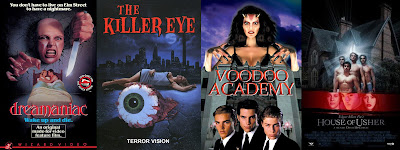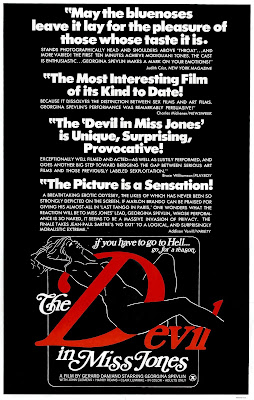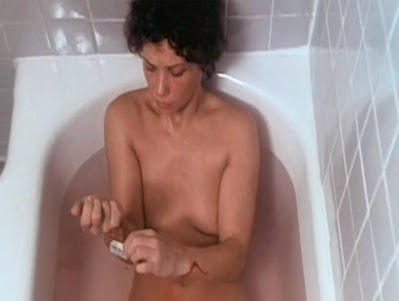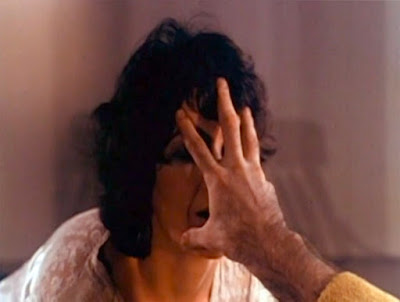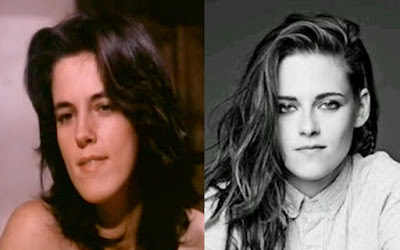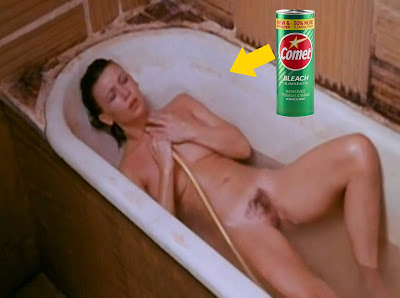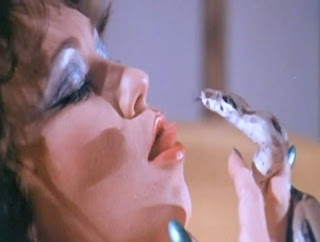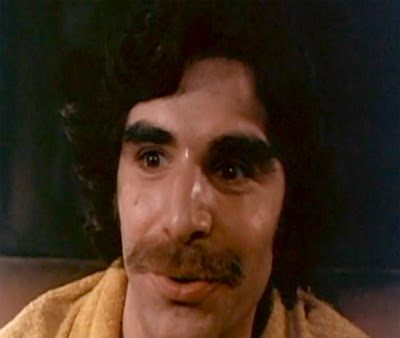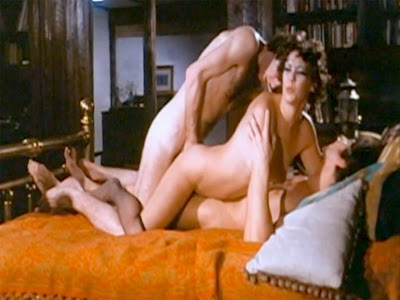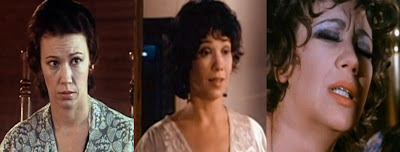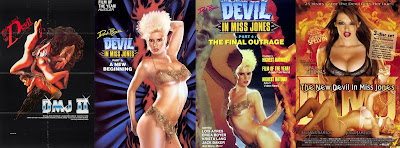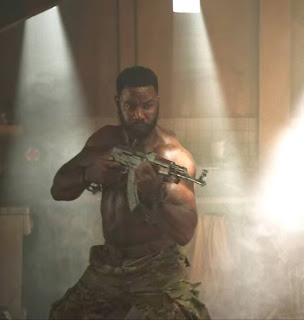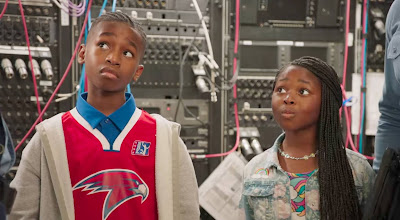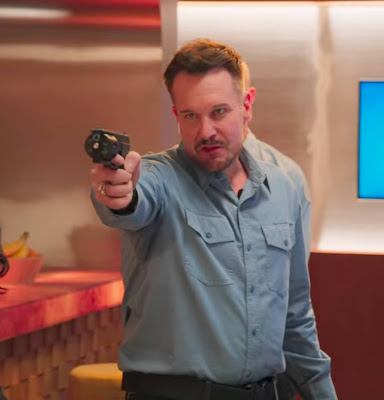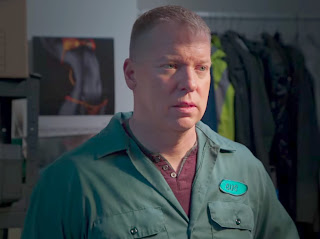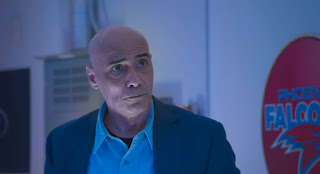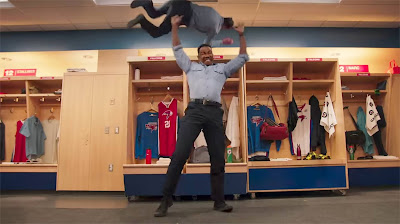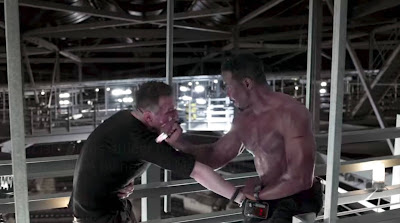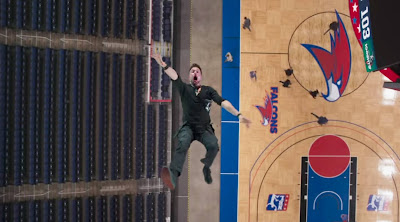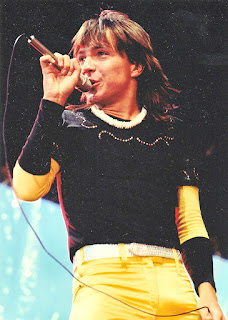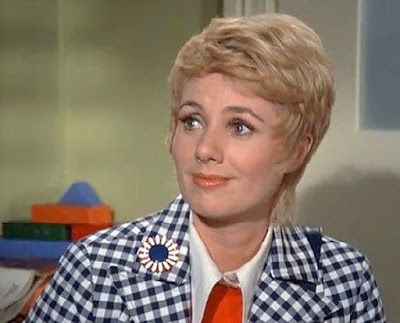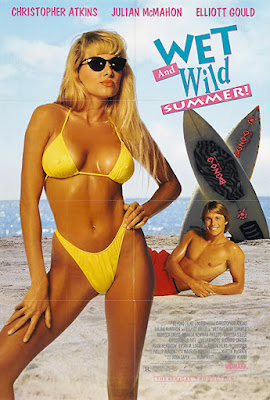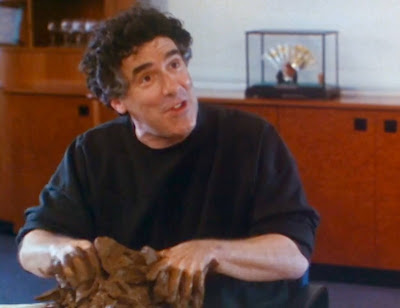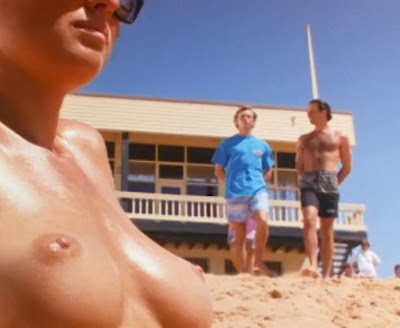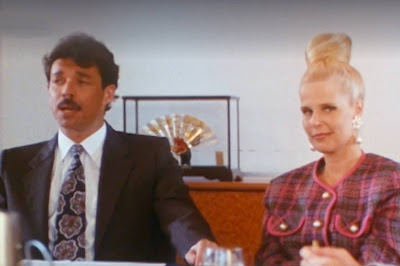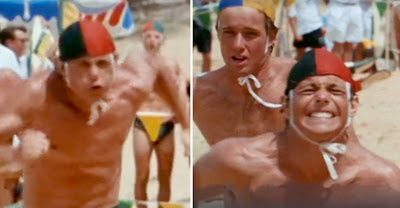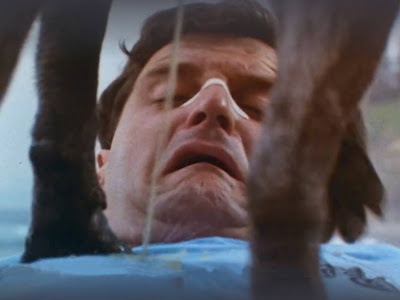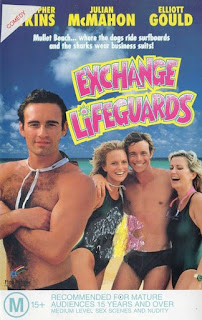It’s Halloween so I feel compelled to review something seasonally appropriate. The works of Romero, Carpenter and Craven are typical fodder for this sort of thing, or I could look at a couple of Frank Whale and Jacques Tournier films if I wanted to get all New York Times about it (I don’t). Instead, I thought I’d explore a different type of horror director, one who pays homage to horror conventions yet puts his own unique spin on the genre. This Halloween, I’m delving into some select works from David DeCoteau.
No one should watch a David DeCoteau horror movie expecting to be scared. Even his best ones are standouts not because they succeed as horror movies, but because they possess that so-bad-it’s-good magic. Yes, DeCoteau is that kind of filmmaker, occupying the same strata as Fred Olen Ray.
Like FOR, DeCoteau is extremely prolific, with 165 directorial credits to his name as of this writing (FOR only has 159, but he has more writing and acting credits than DeCoteau). Also like FOR, DeCoteau has worked in numerous genres, from hardcore porn to family-friendly Christmas movies. Yet, regardless of the movie’s genre, the era in which it was made, or pseudonym the director uses, there are certain signifiers that reveal a movie as being a DeCoteau product, signifiers that I’ll highlight in the movies below. Though many of these themes and techniques aren’t unique to the director on their own, they are hallmarks of a DeCoteau product when combined with some very specific, recurring tropes.
DREAMANIAC
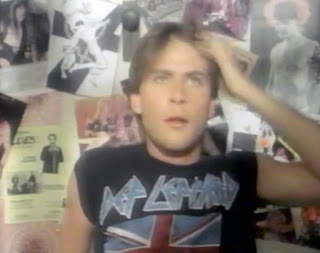 |
| The moment Thomas Bern realized he didn’t want to be in movies anymore. |
DeCoteau’s first horror movie was this 1986 Nightmare on Elm Street cash-in (one of the movie’s taglines was, “You Don't Have to Live on Elm Street to Have Nightmares”). Adam (Thomas Bern, in his screen debut/swan song), an aspiring heavy metal musician who is never shown playing or listening to it, agrees to let his girlfriend’s snooty sister Jodi (Lauren Peterson) rent his place to host a party for her prospective sorority. When Jodi’s guests arrive it’s soon evident that the sorority she wants to join is Phi Kappa Kunt. “Do I know you?” Jodi’s sister Pat (Kim McKamy) asks Francis (Dixie Carter lookalike Cynthia Crass), a sorority member bedecked in a giant foreskin. “I doubt it,” Francis sniffs. “I went to private schools all my life and I’m rich as shit.” The men attending this party don’t fare much better, being either dorky, goofy or smarmy. Only Pat is remotely likable, though I found her initial interaction with Adam to be borderline abusive.
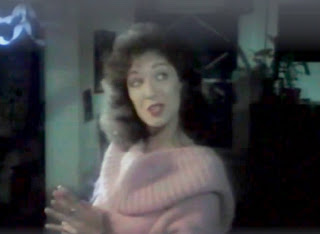 |
| Julia Sugarbaker goes to college. |
Though Dreamaniac has a few OK practical effects (it’s one of DeCoteau’s bloodier movies, though that “too gory for the silver screen” tag on the poster art is total bullshit), whatever schlocky potential it may have had is dashed by Helen Robinson’s lame script, the high school play-caliber acting and heavily padded runtime. That it was shot on video doesn’t help, though the quality of its cinematography is more early ’80s porn movie than shot on shitteo. That said, the picture is still pretty murky and fuzzy, making it even more of a chore to watch.
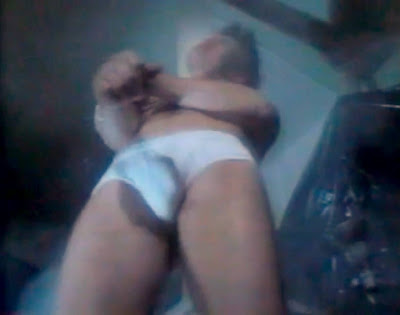 |
| What makes a David DeCoteau film unique? Exhibit A. |
Story-to-Runtime Ratio: Barely 40 minutes of story to an 82-minute runtime. (I swore when I first watched it the movie was 1 hour, 42 minutes, but maybe it just felt that long.)
Method(s) Used to Pad Runtime: Repeated footage; footage of people walking/running; repeated footage of people walking/running; slooooow pans; even slower opening and end credits.
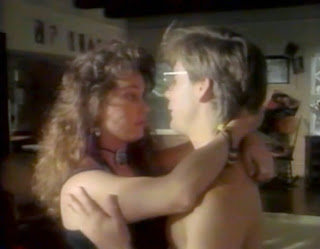 |
| Kim McKamy considers whether porn might be less demeaning. |
Homoerotism Level: Lower side of medium, though after executive producer Charles Band screened the movie someone from his office called DeCoteau and asked, “Are you gay?”
Percentage of Runtime Male Cast Members in Underwear: Less than 10%, though Dreamaniac has more male nudity than other DeCoteau titles.
Will it Scare Homophobes? They may bitch about the amount of man-ass on display, but otherwise, no.
THE KILLER EYE
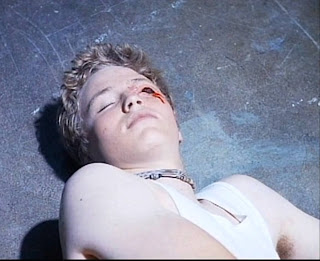 |
| Ryan Van Steenis never saw the Eighth Dimension coming. |
Grady, however, was too busy arguing with his horny wife Rita (“You want to talk about you and your orgasms now?”) to notice any of these developments. It’s only after Rita (Jacqueline Lovell) leaves to have a three-way with their downstairs neighbors, hunky stoners Tom and Joe (David Oren Ward and Roland Martinez, respectively), that Grady notices his subject is now dead. So, he calls his assistant Morton (Kostas Koromilas), who conveniently lives in the same building, to, well, assist him, much to the chagrin of Morton’s young wife Jane (Nanette Bianchi). Though it would seem that a giant floating eyeball would be hard to miss, quite some time passes before it’s discovered, even though it’s frequently hovering only a few feet away, using its phallic-like optic nerve to get Rita off while her two stoned studs doze on either side of her, then feel up Jane while she showers.
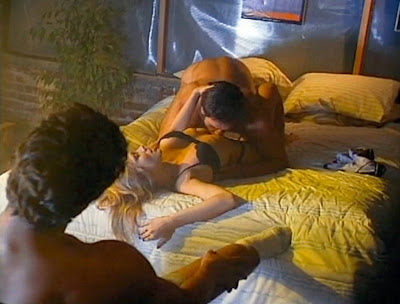 |
| A typical night with Jerry Falwell Jr., his wife and their pool boy. |
Meanwhile, Creepy Bill (Blake Adams, billed here as Blake Bailey), a guy who, near as I could tell, just hangs out in the apartment building’s attic, happens upon the dead hustler’s body. Because Bill’s not quite right in the head, he has no interest in blackmailing Grady (“When you tell on others, you’re just telling on yourself,” he says). Instead, he joins the search for the titular Killer Eye, which at this point is more accurately described as the Creeping Molesting Eye. Rita, Tom, Joe and Jane join their efforts to trap the giant eye, to no avail. (“It’s been floatin’ and fucking for hours, so it’s got to be getting tired,” observes Creepy Bill.) But it soon becomes quite obvious that one member in their group has no interest in stopping the sentient eyeball.
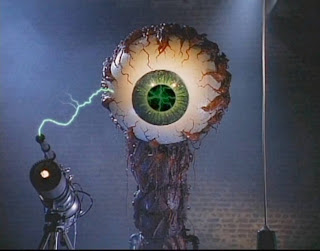 |
| The giant, phallic eyeball from the Eighth Dimension. |
Story-to-Runtime Ratio: Really only enough story here to support 70 of this movie’s 90 minutes.
Method(s) Used to Pad Runtime: Extended PG-13 sex scene; extended R-rated shower scene; repeated footage, especially of that big rubber eye; slooooow pans; even slower end credits.
Has Been/Porn Star in Cast: Jacqueline Lovell worked in adult film under the name Sara St. James.
Homoerotism Level: High (see below).
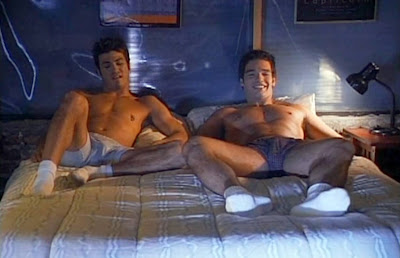 |
| #NoHomo |
Percentage of Runtime Male Cast Members in Underwear: David Oren Ward and Roland Martinez never once put on pants, so a good 30-40%.
Will it Scare Homophobes? They’ll definitely be nervous, though Lovell and Bianchi are well utilized as the movie’s beards.
VOODOO ACADEMY
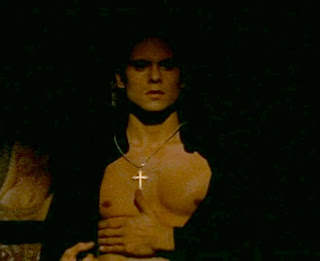 |
| The spirit of Voodoo Academy possesses Chad Burris. |
Like The Killer Eye, this 2000 release takes a premise that would’ve been common on the movie screens of yesteryear and pulls it into the 1990s, with DeCoteau putting his own, unmistakable spin on the material.
Christopher Sawyer (Riley Smith) is a devotee of Rev. Holice Carmichael’s “Neurocystic Christian Church” (a mix of Catholicism and Scientology, as one character describes it), so he’s thrilled to be accepted into the reverend’s bible college. Of course, the school’s extremely small, all-male student body — Christopher would be the school’s sixth student — is a bit of a red flag, but Mrs. Bouvier (Debra Mayer), the school’s sole administrator, explains that’s only because Carmichael Bible College is still an experimental institution. The school isn’t even accredited yet, another red flag, as is Rev. Carmichael’s sudden introduction of confessional booths. And seeing how the Rev (Chad Burris, who looks like he could be Jeff Stryker’s little brother) interacts with his students — placing hands on their muscular thighs, fixing his seductive gaze on their young, handsome faces — you just know those booths have a glory hole.
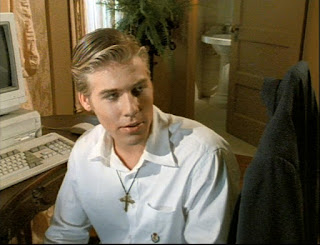 |
| Kevin Calisher looks over Carmichael Bible College’s newest student. |
Simply put, Voodoo Academy is DeCoteau’s masterwork, second only to his one stab at indie legitimacy, 1997’s Leather Jacket Love Story. While the acting isn’t that good (it’s still a DeCoteau movie), the male cast gamely sells the homoerotism, especially Burris and, as class smartass Billy, Kevin Calisher. What’s amazing about this movie is that though its content is relatively tame, it’s so heavily suggestive that by the time the final credits roll you’ll swear you saw the guys suck each other off.
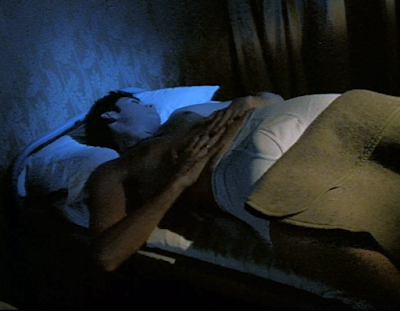 |
| The boys of Voodoo Academy can’t fight the feeling. |
Story-to-Runtime Ratio: Though 92 minutes is a wee bit longer than it needs to be (80 minutes is closer to the mark), Voodoo Academy doesn’t overstay its welcome.
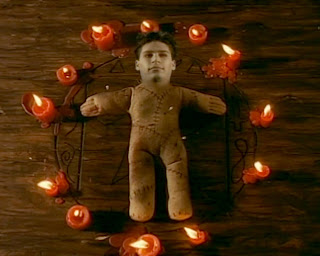 |
| Rusty is swiftly punished for following his urges. |
Has Been/Porn Star in Cast: Despite all the guys in the cast looking like they were plucked from Chi Chi LaRue’s stable, none of them have done porn. Debra Mayer was in several Full Moon films prior to her death in 2015, but no porn.
Homoerotism Level: Were it any higher it would be hardcore gay porn.
Percentage of Runtime Male Cast Members in Underwear: Oh, 60%, easy.
Will it Scare Homophobes? They’ll be fucking terrified.
EDGAR ALLEN POE’S HOUSE OF USHER
 |
| Frank Mentier and Michael Cardelle make awkward, awkward love. |
With his 2008 retelling of the famous Poe tale, DeCoteau doesn’t waste time with mere homoeroticism. This one’s motherfuckin’ gay! What’s more, he made it for Here! TV, the gay network that gave us the wonderfully terrible series Dante’s Cove and The Lair. Was I giddy at the prospect of watching this? You bet your Tommy Hilfiger boxer briefs!
Unfortunately, Here! TV didn’t get the director of Voodoo Academy; it got the director of the 1313 series. DeCoteau’s interest in the material doesn’t go much further than cashing a paycheck, so what should have been a campy homo horror is a boring slog. He couldn’t even be bothered to eliminate the street traffic noise from scenes that are supposed to be taking place in the gardens of a remote country estate.
Part of the movie’s undoing is its casting. Frank Mentier, as the eccentric Roderick Usher, and Michael Cardelle, as his childhood friend Victor Reynolds, are emblematic of DeCoteau’s erotomania: buff, smooth and young. While Cardelle does look good in boxer briefs — because of course DeCoteau’s going to get him stripped down to his underwear — it’s nigh impossible to believe that his character has traveled the world and seen some shit when we suspect the actor playing him is filming his scenes during his high school spring break (and, based on Cardelle’s performance, between bong hits). Mentier, looking and sounding more bored than stoned, appears to be slightly older — he was possibly on his spring break from university — but not much more believable. These characters needed to be played by men who could act, not boys who could not. Jaimyse Haft, as Roderick’s sister Madeline, tries to deliver a real performance, bless her heart, but, alas, she just doesn’t quite have the acting chops to pull it off.
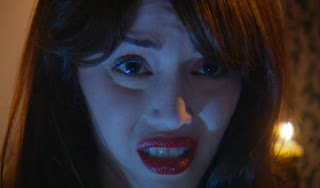 |
| Who farted? |
OK, I know better than to watch DeCoteau’s movies for the acting, but when so little regard is shown for all other production aspects (the script, art direction, the pacing) you become less forgiving. The one possible saving grace House of Usher had was its sex scenes, something to appease the viewers until there’s a Next Door Studios’ House of Usher, but again DeCoteau drops the ball. Mentier makes out with both Cardelle and a blonde whatsisname, yet it barely qualifies as softcore. The actors never even remove their underwear, instead yanking them below their buttocks but keeping their genitalia covered. You’d think a man who has directed gay porn would have a better grasp of the mechanics of sex. I wasn’t expecting to see any dicks, but I thought we could get sex scenes that reached the same level of explicitness as a Shannon Whirry erotic thriller, or, you know, Dante’s Cove.
Unless you share DeCoteau’s fondness of cute guys walking around in their underwear, House of Usher isn’t even worth hate watching. Better to stick with Roger Corman’s 1960 adaptation. Or try your luck with this 1989 adaptation or this one from 2006, both movies looking like they deliver the fun kind of bad DeCoteau didn’t. If nothing else, the acting should be better.
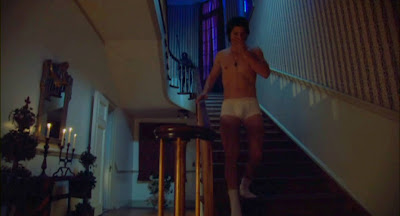 | |
| Michael Cardelle reminds us we’re watching a David DeCoteau movie. |
Story-to-Runtime Ratio: Though there should be enough story to flesh out an 84-minute movie, Simon Savory’s uninspired script, coupled with the sluggish pacing and bad acting, make House of Usher barely tolerable for one hour.
Method(s) Used to Pad Runtime: Repeated footage; lingering shots of guys in their underwear; people walking; extended softcore sex scenes; slooooow pans.
Has Been/Porn Star in Cast: Jill Jacobson of Falcon Crest fame(?) has a cameo so inconsequential it’s insulting.
Homoerotism Level: Extremely high.
Percentage of Runtime Male Cast Members in Underwear: 50%, augmented with some male rear nudity, but neither helps.
Will it Scare Homophobes? Yes, but they’ll be bored soon enough.
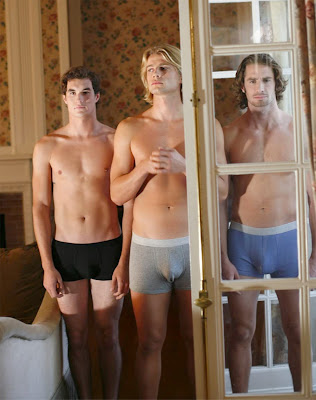 |
| Boo! |

